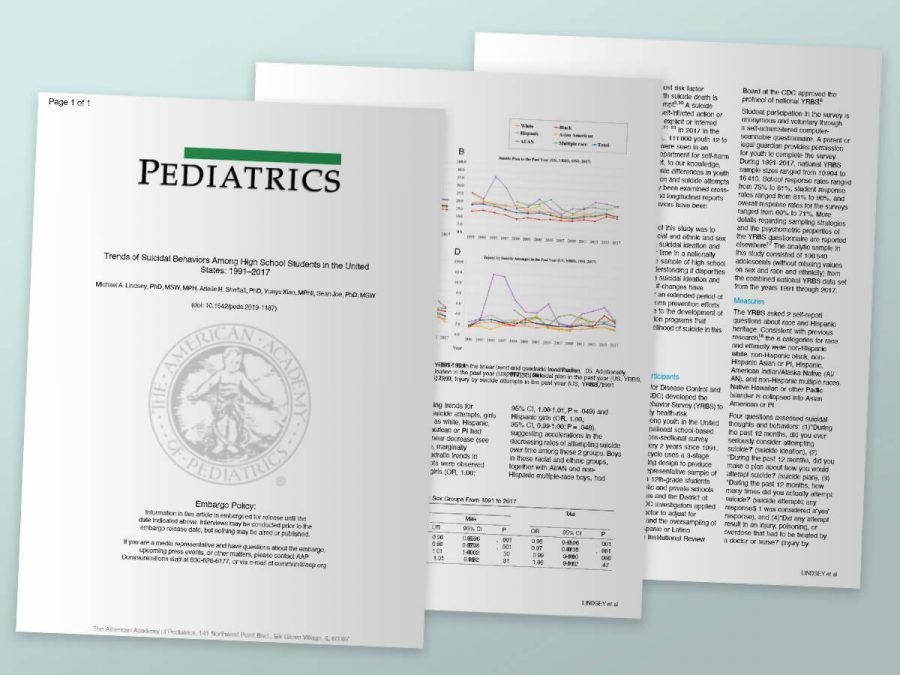A task force to address black youth suicides is pending approval by Governor Andrew Cuomo after NYU researchers found a significant increase in suicide rates among black teens.
A recent study led by researchers at NYU’s McSilver Institute for Poverty Policy and Research found that suicide attempt rates among black teenagers rose by 73% from 1991-2017. The study, led by McSilver Institute Executive Director Dr. Michael Lindsey, used data from the Centers for Disease Control and Prevention. It showed that self-reported suicide attempts in black youth had risen, while rates fell or remained stagnant for other demographics.
Lindsey previously testified about the topic to the New York State Senate Mental Health and Developmental Disabilities Committee. NY Sen. David Carlucci (D), who chairs the committee, and NY Assemblymember Kimberly Jean-Pierre (D) have since sponsored a bill which would establish a statewide black youth suicide taskforce, to which the study’s results have drawn further attention and support.
The bill is currently under review by the governor’s office after it passed the Senate and Assembly.
Carlucci is looking to jump into action, should Cuomo sign the bill.
“The next step would be the formation of this task force,” Carlucci told WSN. “That we want to happen as soon as possible so that their recommendations and findings can be published and put on legislators’ desks, and we can start working toward and addressing these issues.”
The study was published in the 2019 issue of Pediatrics, a peer reviewed medical journal published by the American Academy of Pediatrics. The study used data from the Youth Risk Behavior Survey, taken by nearly 200,000 high school students across the U.S.
Suicidal thoughts and planning decreased across all sex, race and ethnic groups. However, suicide attempts increased among black adolescents, with black adolescent boys showing a significant increase in injury by suicide attempt.
Lindsey explained potential reasons why black adolescent suicide rates have jumped so significantly.
“Some of it is related to black adolescents not wanting to be judged as weak, or refusing to acknowledge mental health symptoms because of stigma,” Lindsey said. “They may mistrust mental health providers, preferring instead to address their mental health concerns among their family or peer group.”
Brooklyn Borough President Eric Adams, Public Advocate Jumaane Williams, educators and students advocates called for Governor Andrew Cuomo to sign the bill at a press conference on Saturday.
“For years, I have been talking about how the mental health crisis in communities of color is being overlooked,” Adams said. “This troubling study confirms that our concerns are well-founded.”
Adams announced a contest for teens to submit ideas to improve mental health among young people, with a prize of $20,000 from Brooklyn Borough Hall for the most innovative idea.
Gallatin senior and Advocacy Co-Chair of the NYU Black Student Union Ileri Jaiyeoba worried the findings would not be taken seriously because they pertain to black youth.
“Black lives are on the line,” Jaiyeoba said. “It’s so easy to dismiss this as nothing when you are not black.”
Carlucci said he hopes the study is not only taken seriously, but used to bring about greater changes in the way mental health is viewed.
“Mental health really ripples through every aspect of our lives and society, and we really have to focus in there and start to understand more,” Carlucci said. “I really believe that we are at the edge of being able to make some wonderful breakthroughs in helping people that are living with mental illness.”
Correction Oct, 24: A previous version of this article stated that the study’s results were presented to the State Senate. The lead researcher of the study testified to the Senate prior to the study being published. The article and headline have been updated to reflect the correction and WSN regrets the error.
Email Julia Baxley at [email protected].






















































































































































